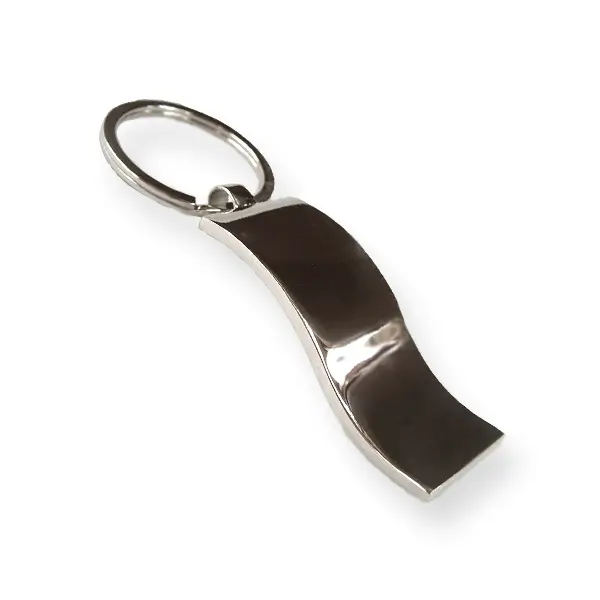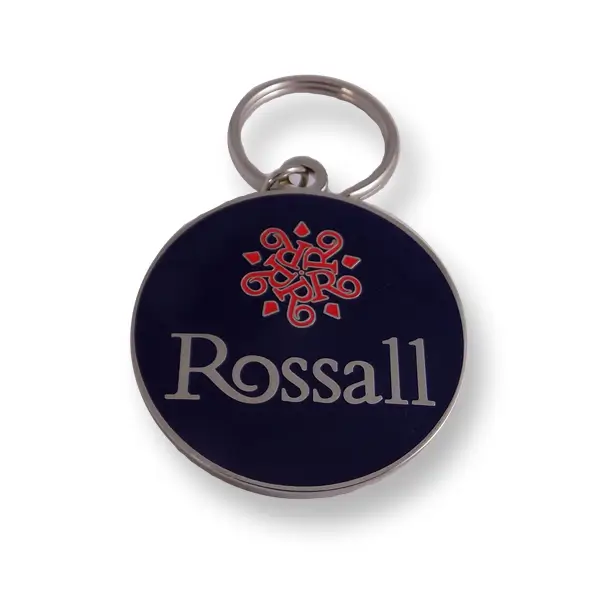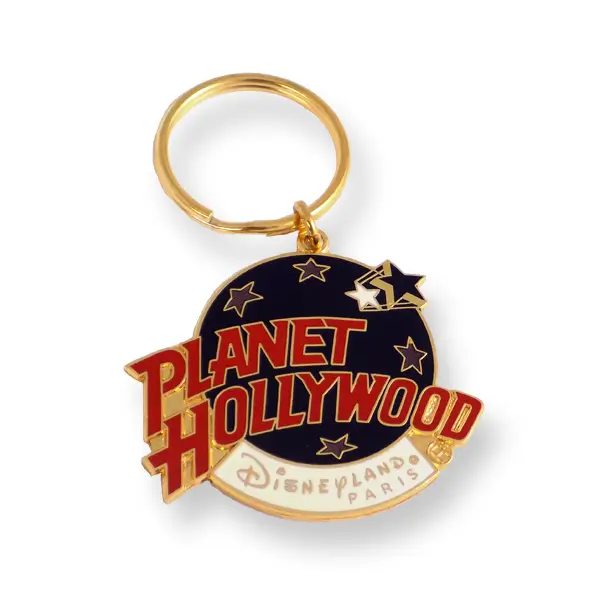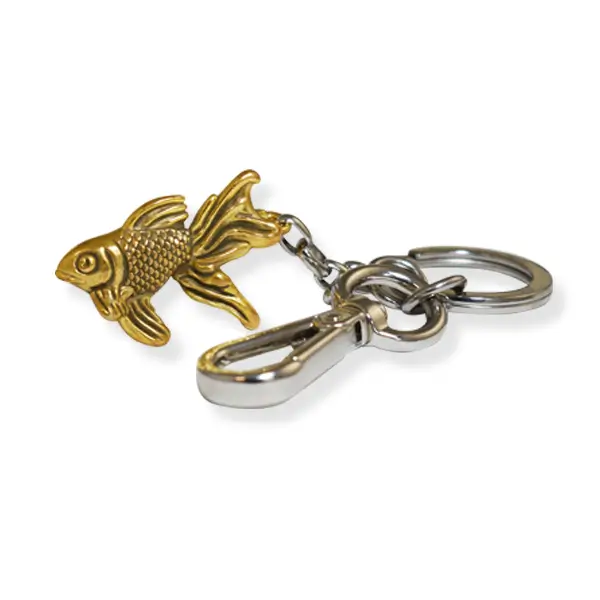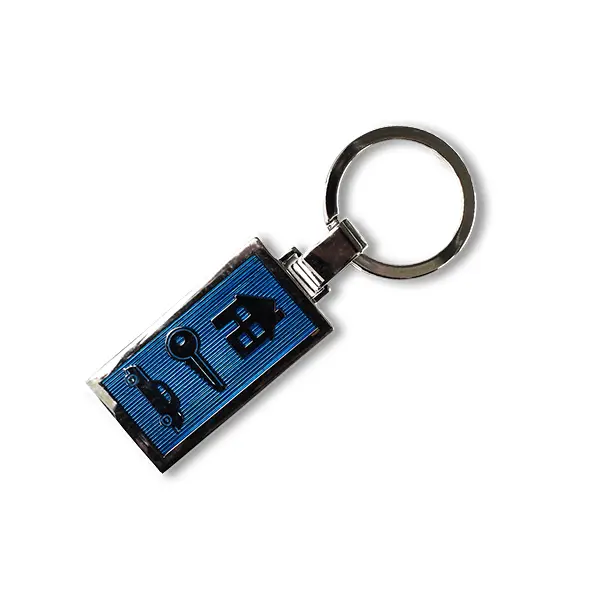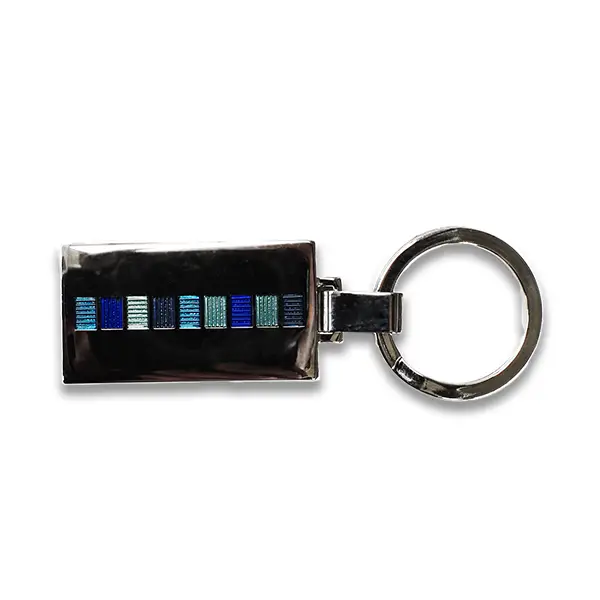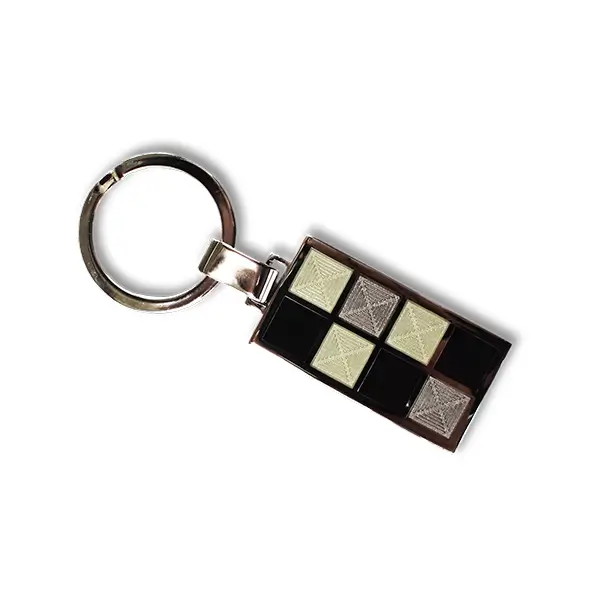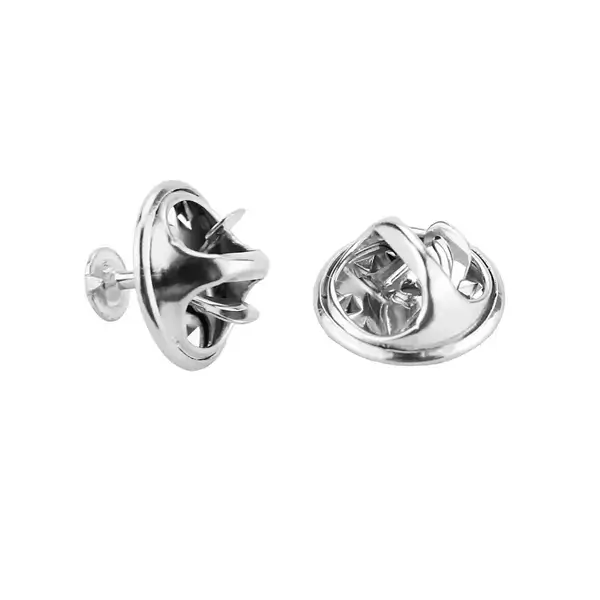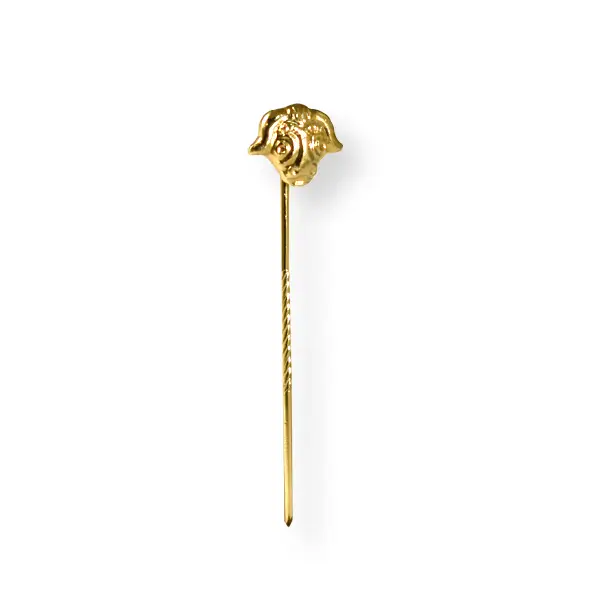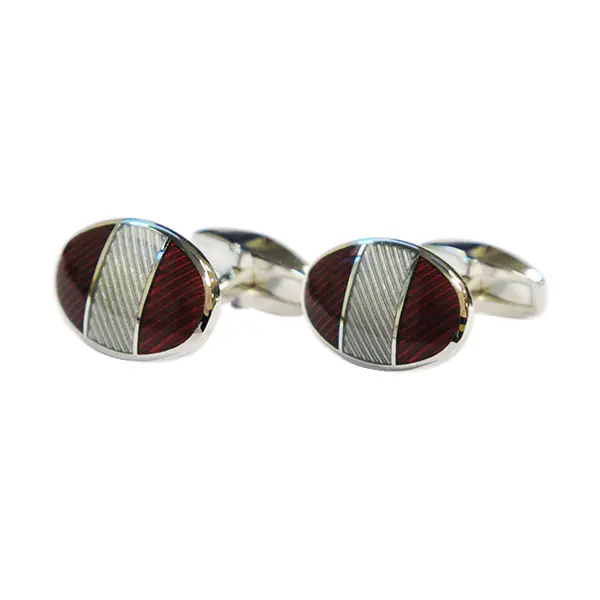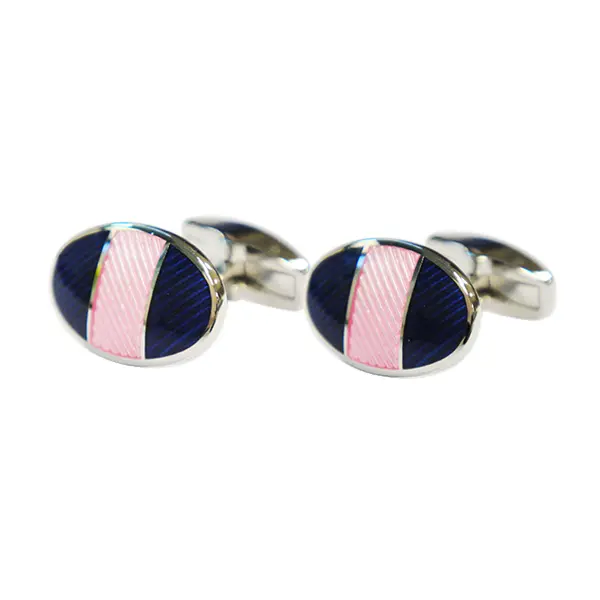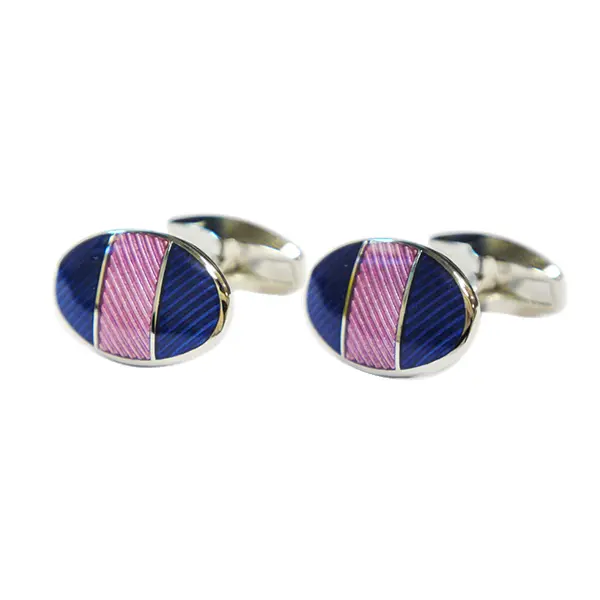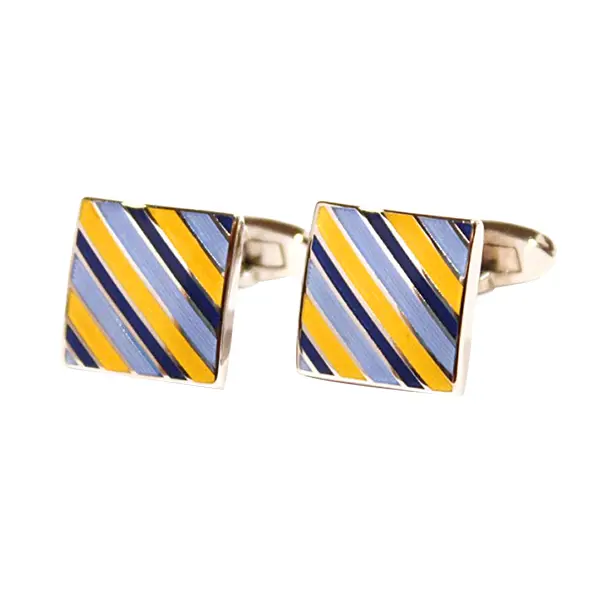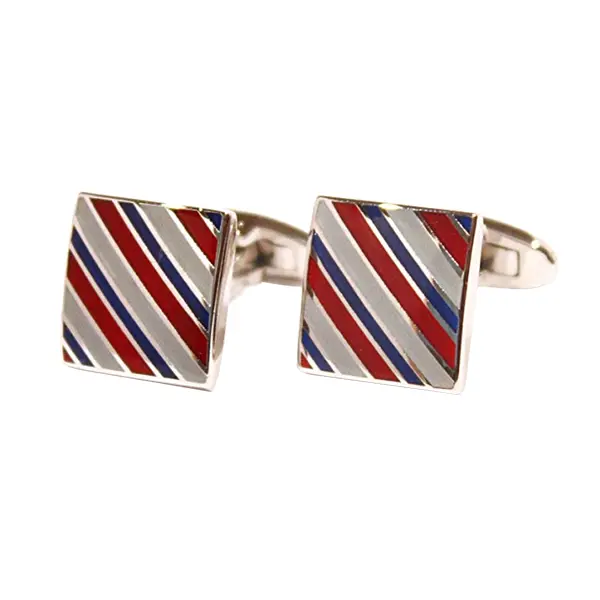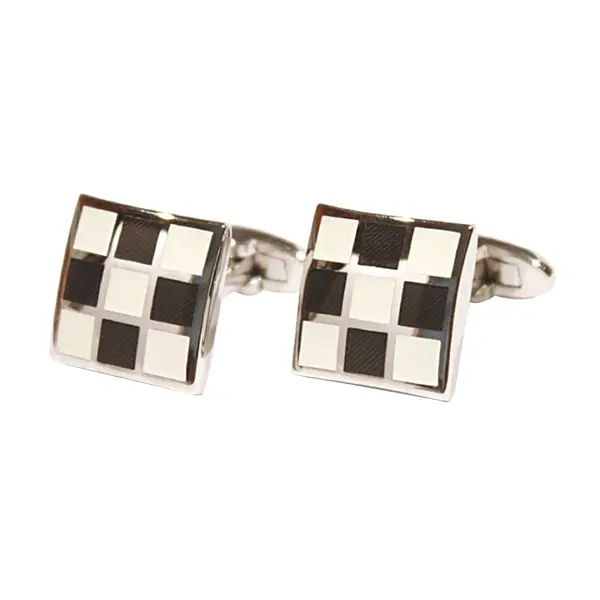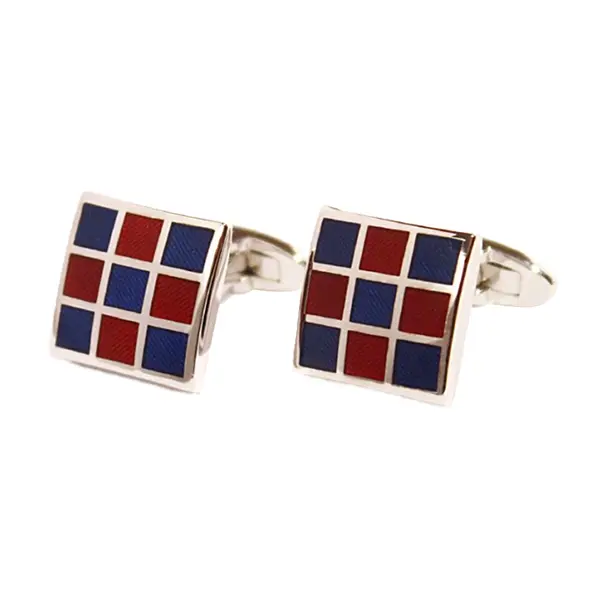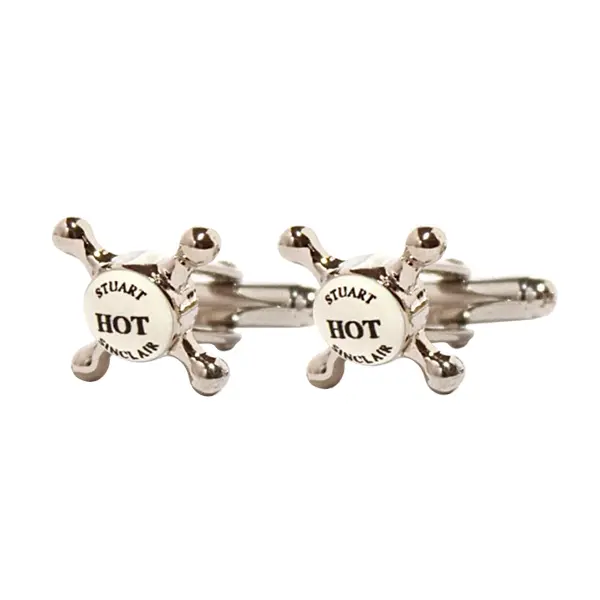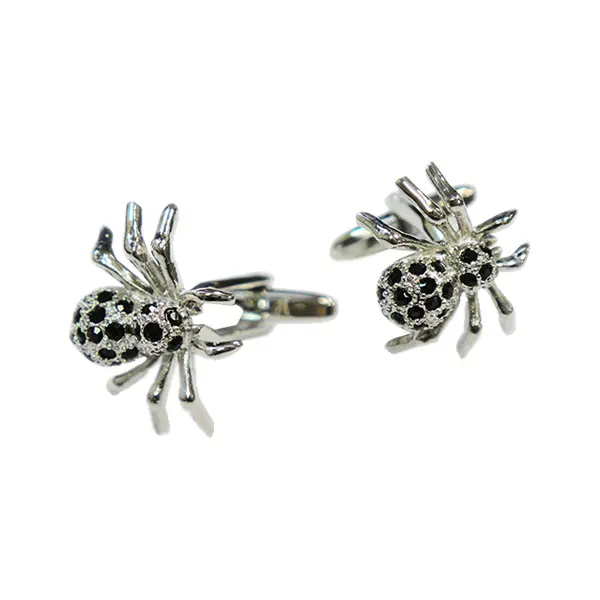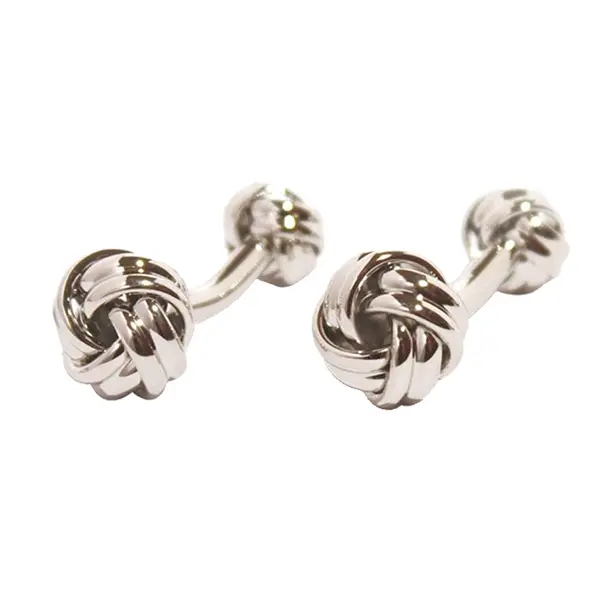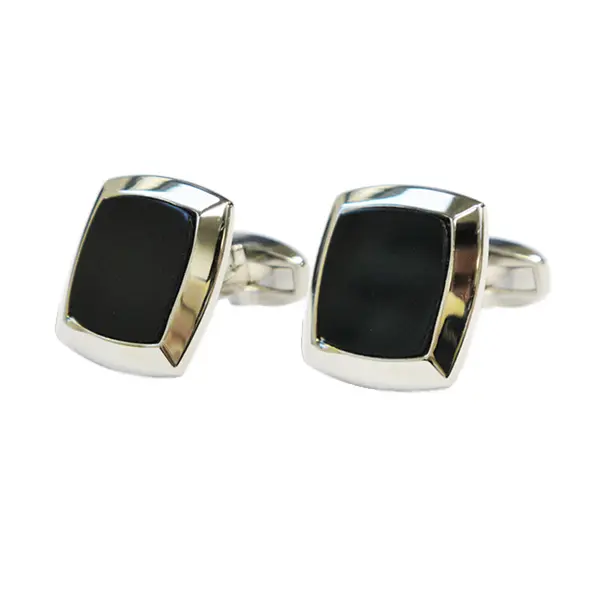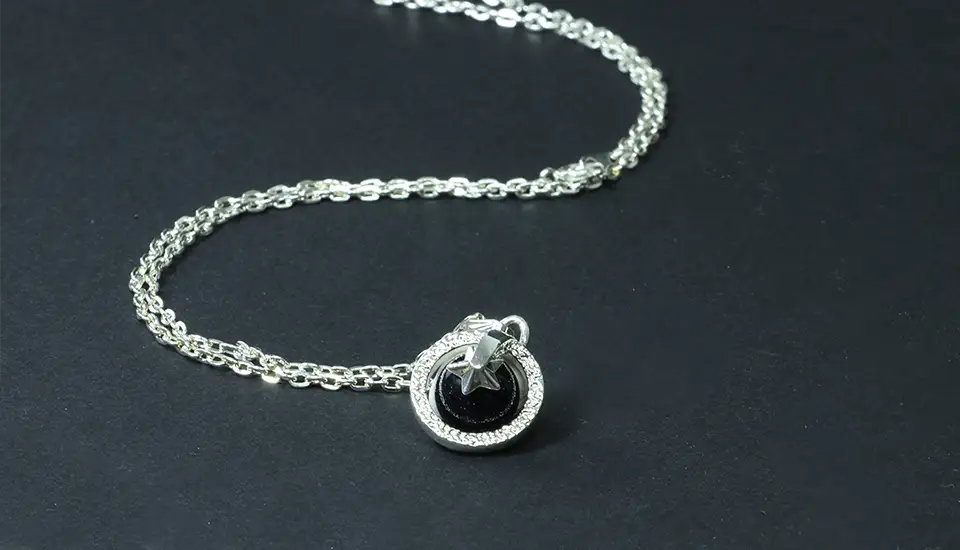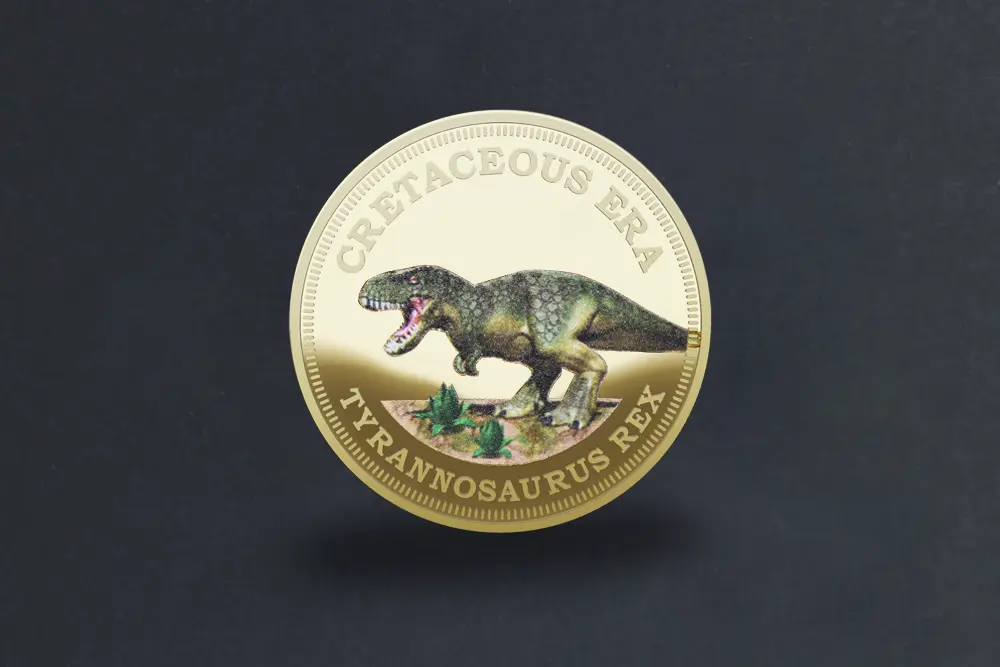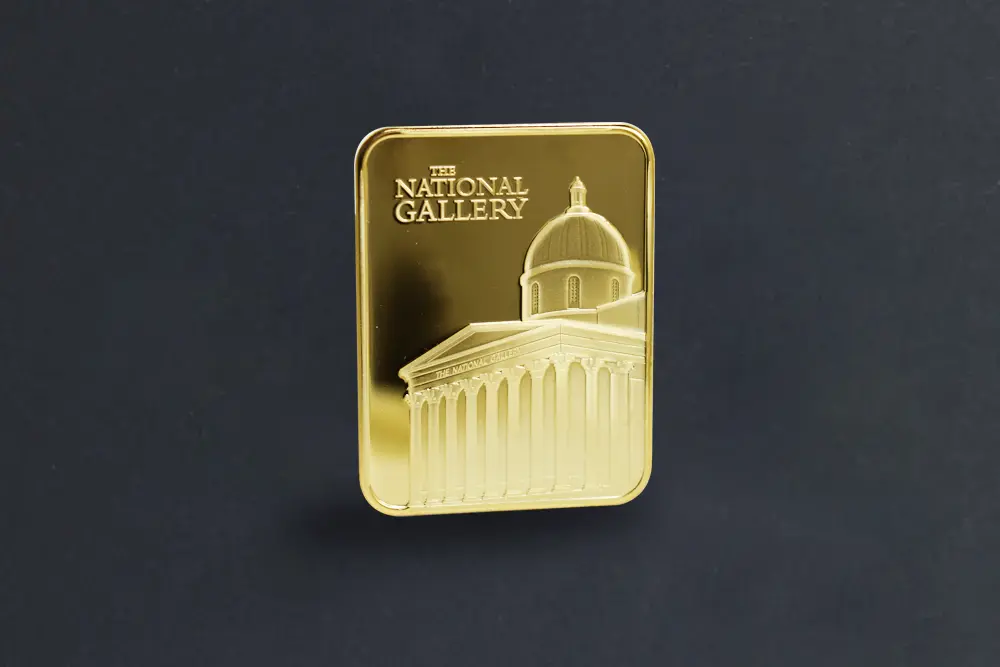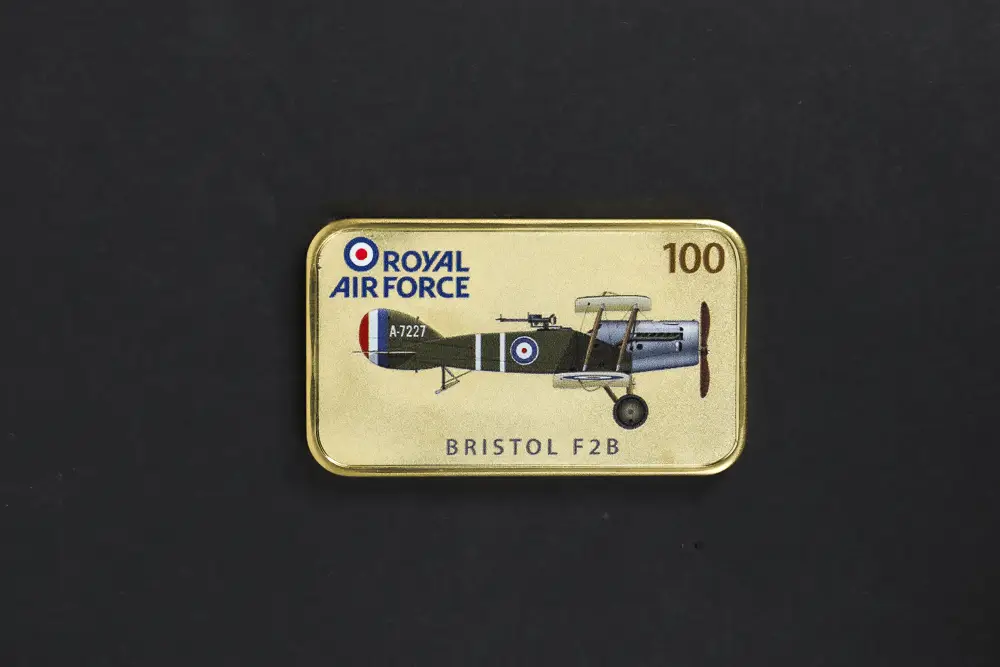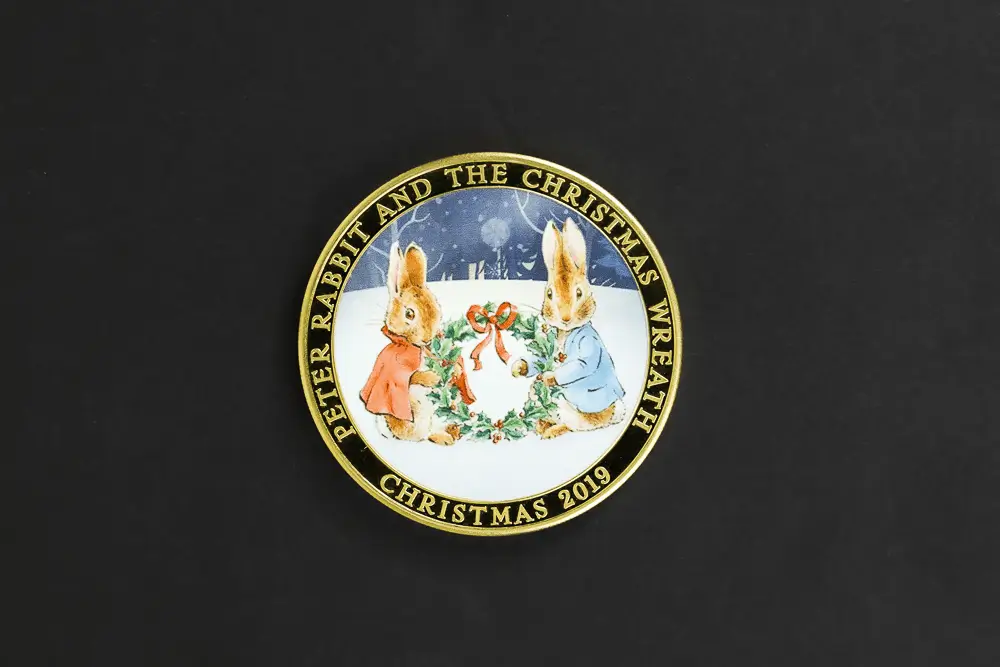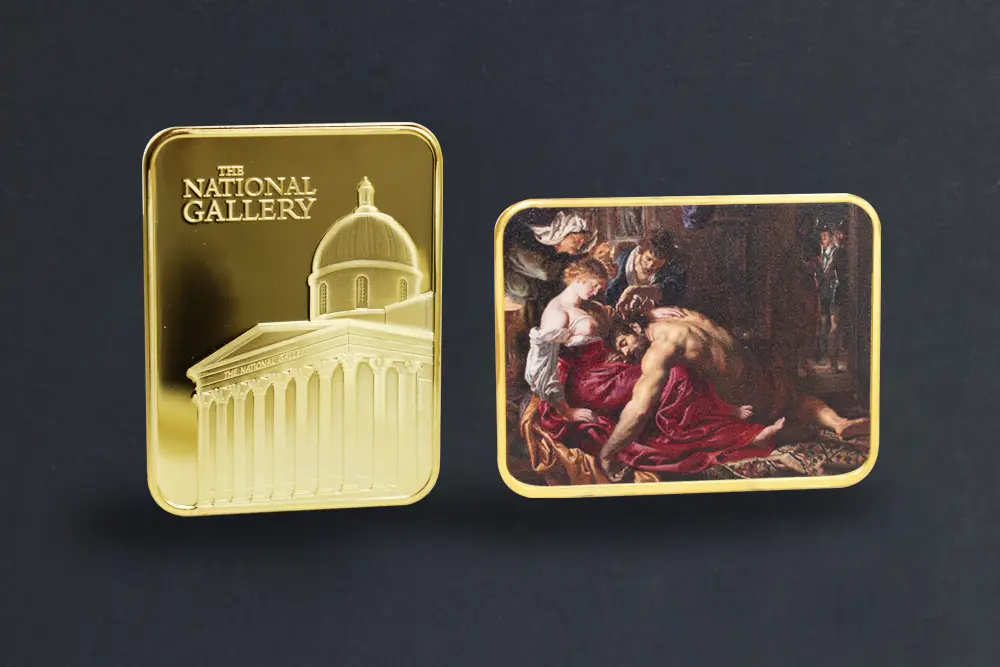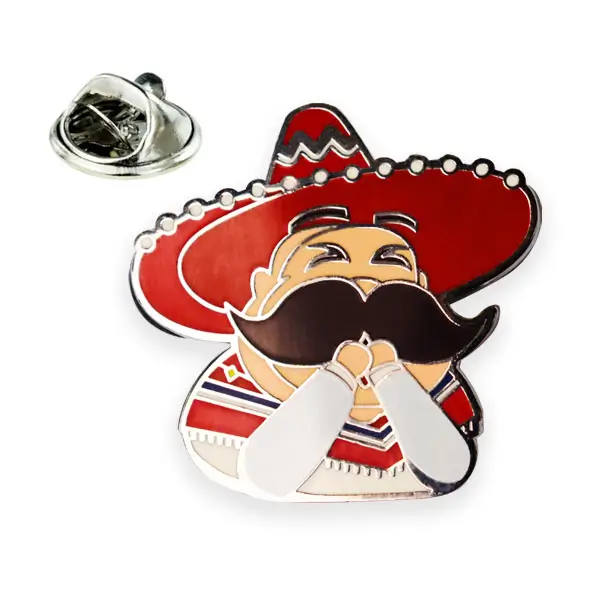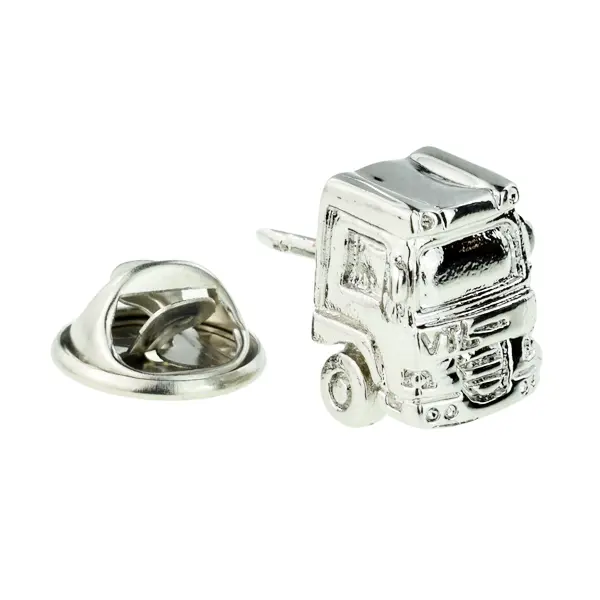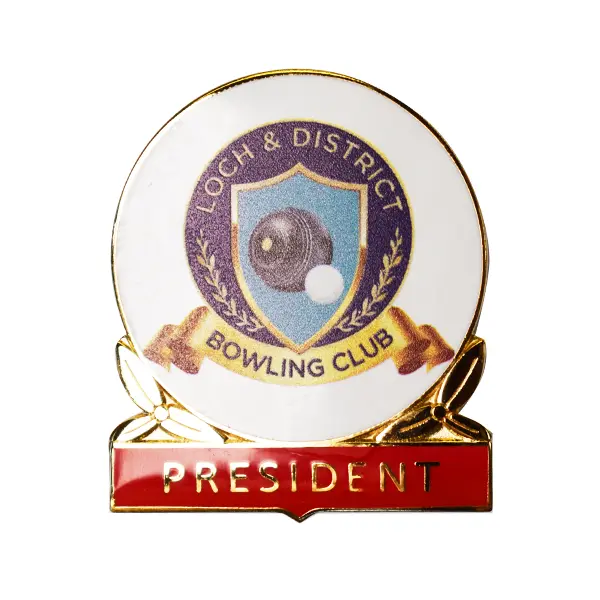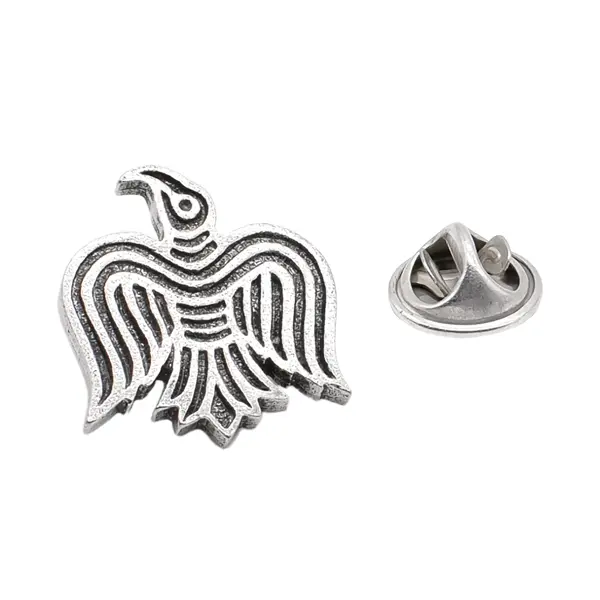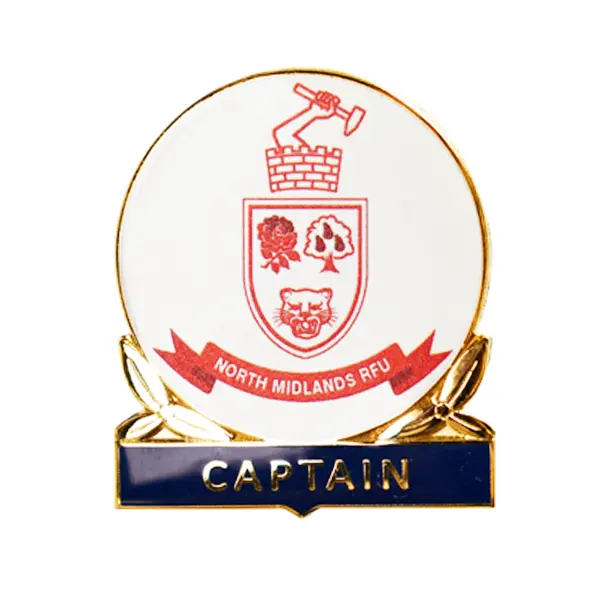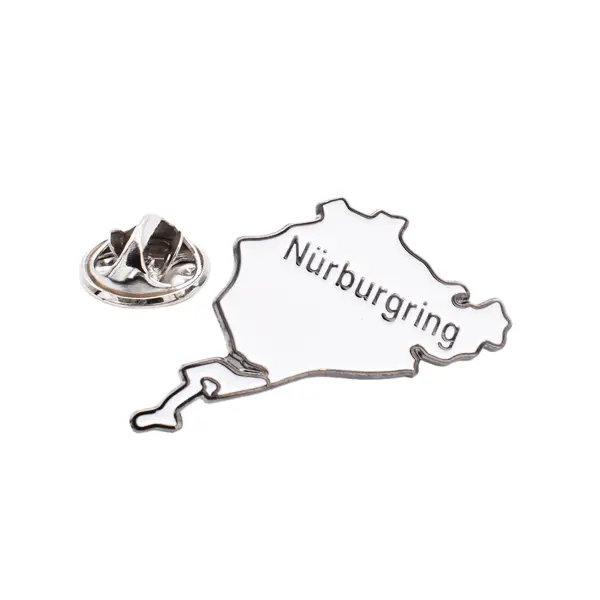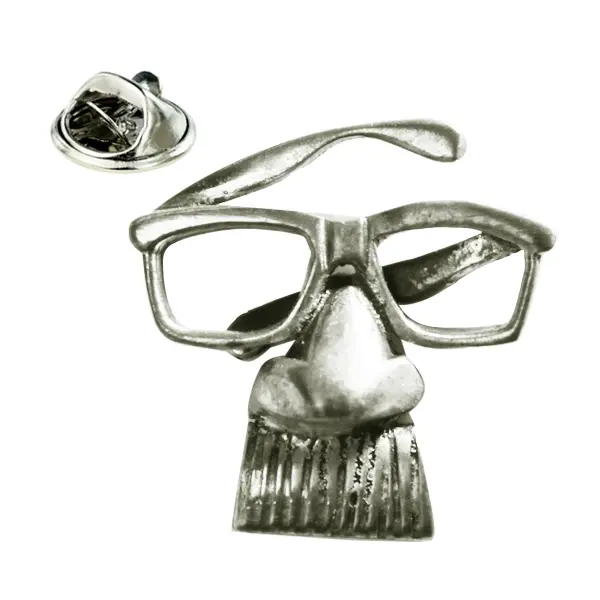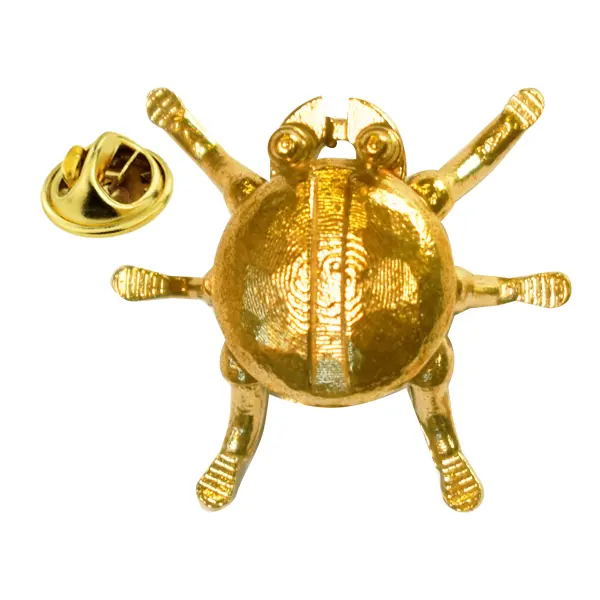
In this case study we are going to focus on some of the different fittings that are employed to ensure that your cufflinks achieve their purpose, fastening shirt cuffs closed.
No Fitting cufflinks
Typically a single piece casting, these cufflinks do not require a fitting as the shape does the job of holding the shirt cuffs closed. In the picture example below, the reel shape enables the cufflink to pass through the buttonhole vertically before being turned horizontally to trap the shirt cuffs in the slimmer mid-section.
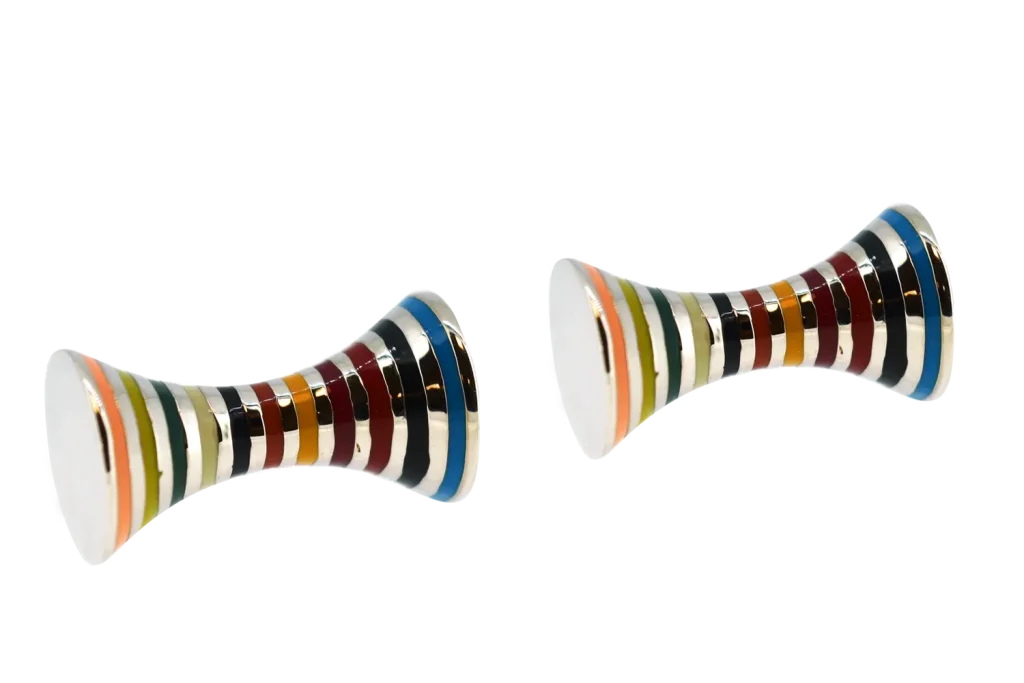
Fixed Stem cufflinks
The fixed stem cufflink is considered modern compared to the traditional chain link cufflink. The stem is often referred to as a “Whale tail” due to the curvature resembling a whale’s fin. The casting pattern at the end of the stem usually bearing the logo of the fashion house passes through the hole in the shirt cuff so that the cuff is held securely between this, and the cufflink design itself, in this case a frog.
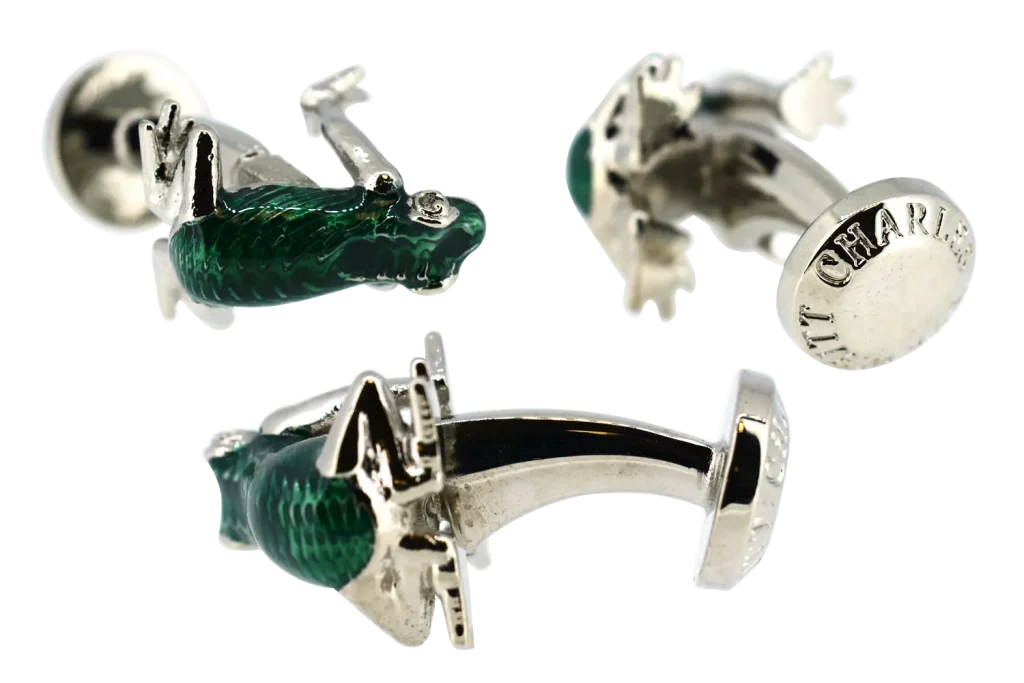
Whale Tail, Swivel fittings
Differing from the fixed stem cufflink this fitting consists of multiple parts. The whale tail stem is connected to a separate cast part which contains a spring mechanism to allow it to pivot. The fitting flips completely flat against the stem to allow it to be inserted smoothly into the hole in the shirt cuff and then snaps back into place to secure the cuffs closed. See the spitfire cufflink below for an example:
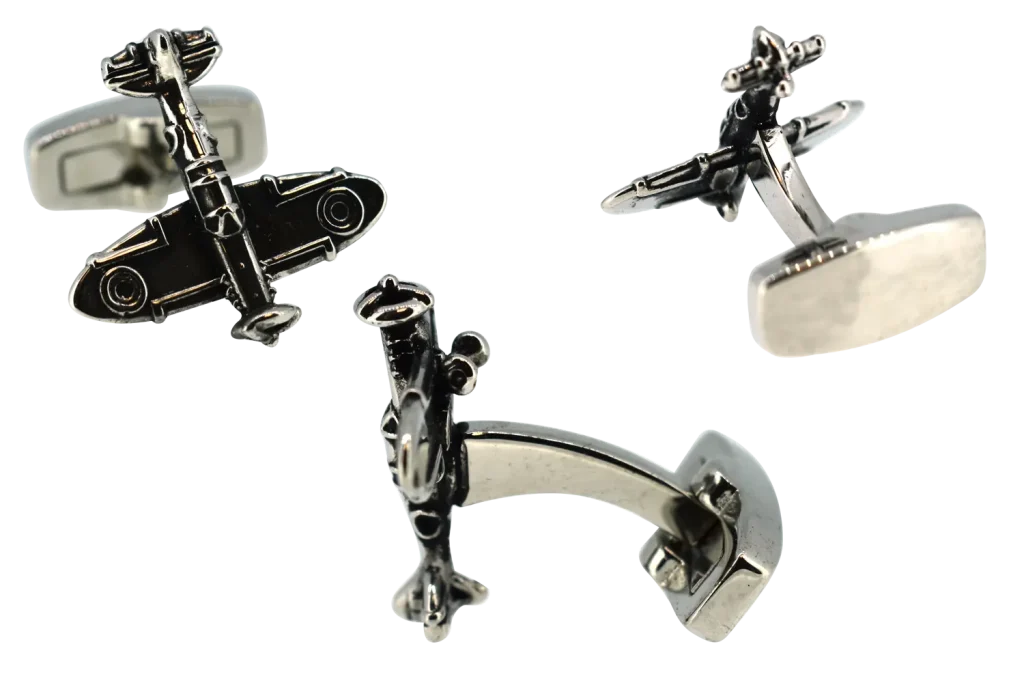
Torpedo Swivel fittings
Like the whale tail fitting, the torpedo fitting contains a spring mechanism to allow it to pivot into a fixed open or closed position. However, whereas the whale tail fitting has a solid, cast stem the torpedo fitting has a u-shaped arm which greatly reduces the amount of material required making this fitting perfect for precious metal cufflinks. The weight of the precious metal required to make this fitting is reduced, lowering cost and enabling most of the material to be used for the cufflink design.

Snap Cufflinks
Popular in the early 1900s but making a reappearance nowadays, snap cufflinks consist of a press stud on one half which aligns with an aperture in the other half. Each half of the cufflink should be inserted into one side of the shirt cuff. They can then be pressed together to close the cuff with a satisfying ‘snap’. When snapped apart they will stay on the shirt cuffs, allowing shirt sleeves to be opened and closed quickly and easily.
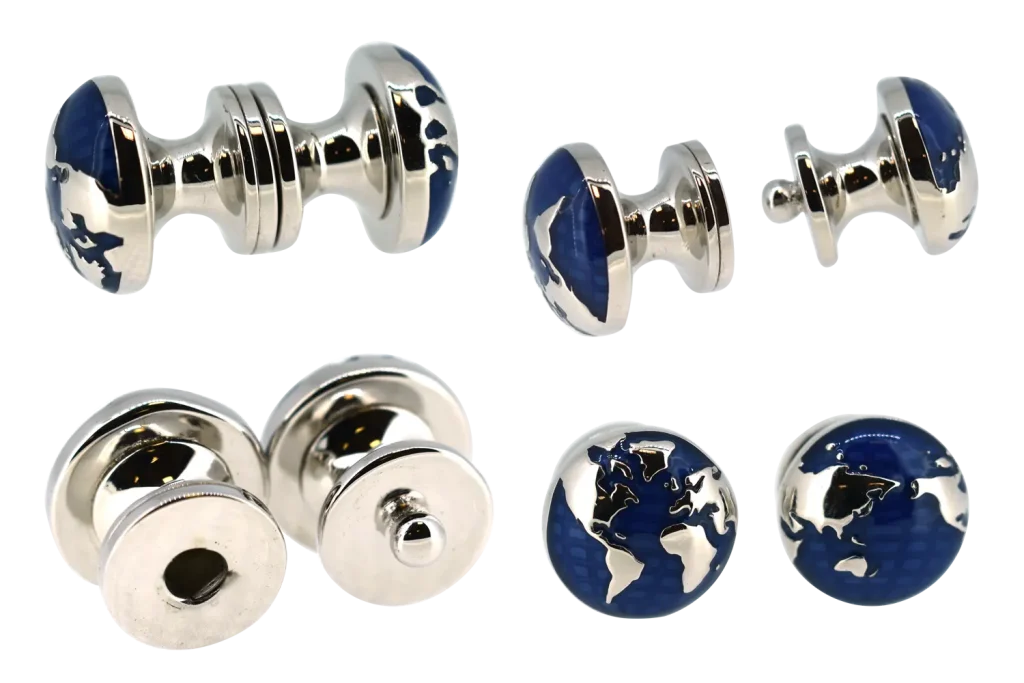
Chain-link Cufflinks
The chain link is the traditional cufflink fitting and it tends to offer a looser fit around the shirt cuff. The two-cufflink halves are linked by a small section of chain. Many men favour chain cufflinks because of their ease of use, simply by pushing one of the halves through both holes of the shirt cuff the cufflinks should remain securely in place until removed.
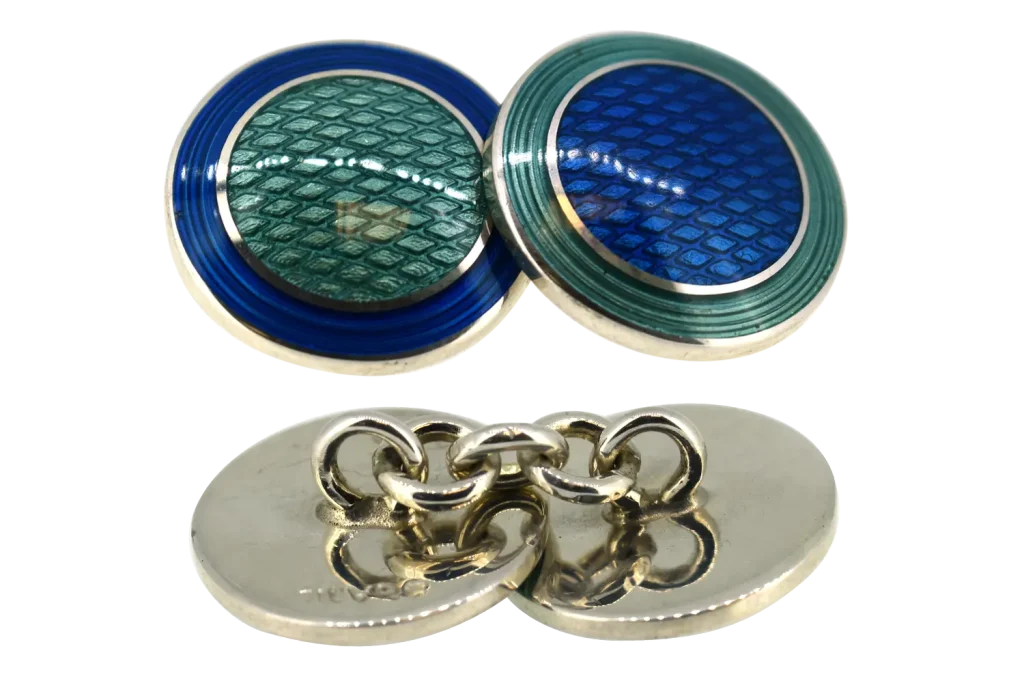
Rigid Connector Link Cufflinks
Similar to chain-link cufflinks these designs feature a rigid metal connector rather than a series of chain links between the cufflink halves. This offers a tighter fit around the shirt cuff and makes the cufflinks less likely to move around during wear. It also offers a convenient place for the manufacturer to engrave or punch their logo into the product.
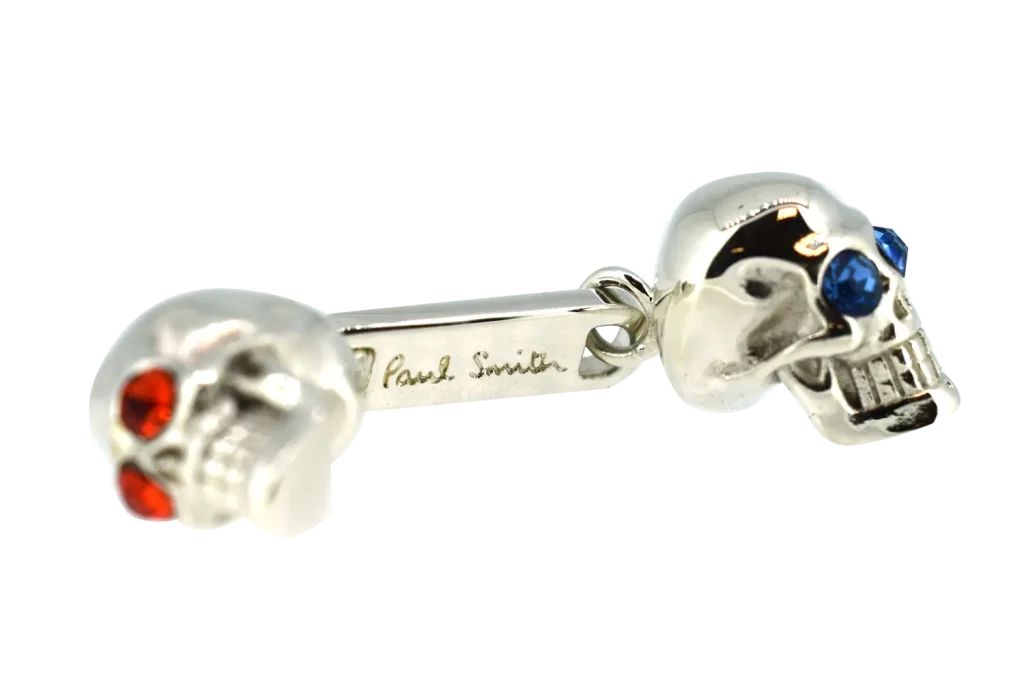
Mechanical Chain cufflinks
Mechanical chain cufflinks consist of two cast body sections with round caps to seal them closed. Typically the cufflink design is manufactured into the cap. Within the body sections the chain is coiled with a spring spiralled around it and a ring attached on the end. This ring prevents the chain from leaving the cufflink body and causes the spring to contract when the cufflink is pulled open, allowing the two halves of the cufflink to separate and exposing chain-link. When the pulling force is released, the spring pulls the two halves of the cufflink back together, fastening the shirt cuffs closed.
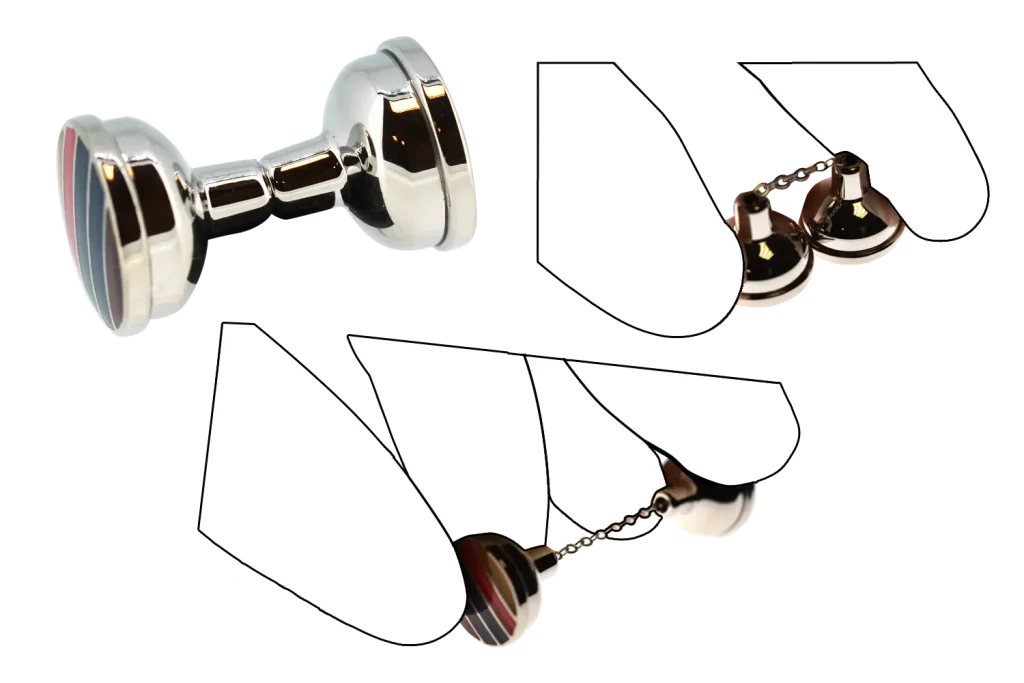
Hinged Stirrup Cufflinks
Hinged stirrup cufflinks consist of a curved stirrup with a hinged bar set. The hinged bar has a clip on one end which connects with an aperture on the opposite side of the cufflink to close it. The hinged bar is pulled open and passed through the holes in the shirt cuff, before being closed, fastening the shirt cuffs in place.
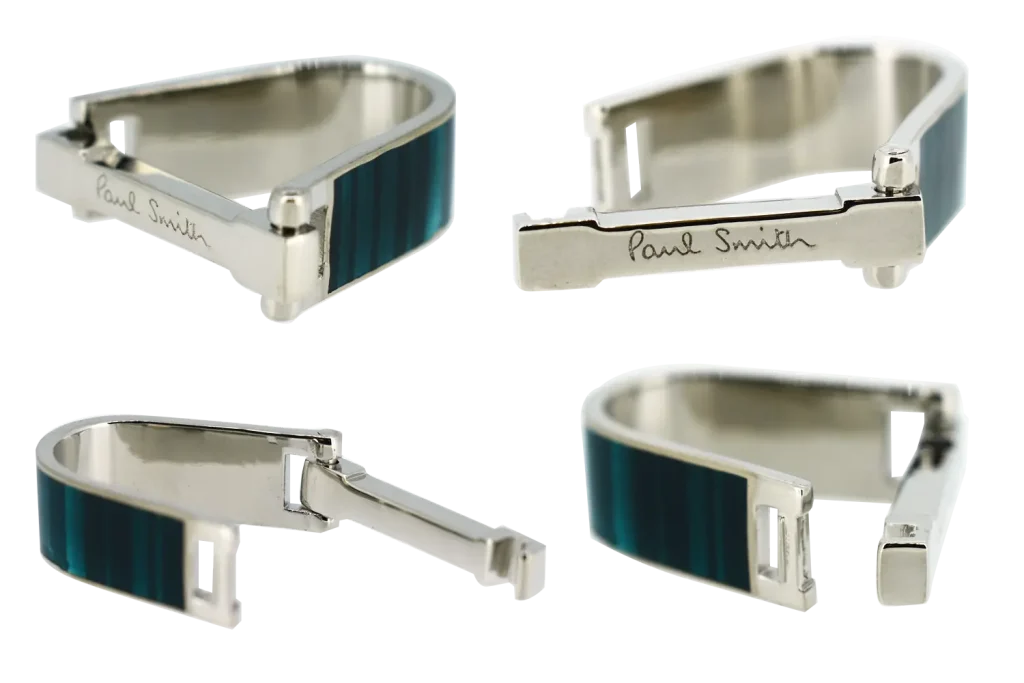
Cufflinks make the perfect accessory for completing a gentleman’s wardrobe, but there is so much more to the classic cufflink than initially meets the eye. Different cufflink fittings make a profound difference to the shirt cuff fit and as a result it is important to try different fittings to find the one most suitable for your own preferences and style. From design elements like colour, style and material right through to the nuts and bolts of the design with shape and fastening, cufflinks make the ultimate statement about the man who wears them to complement his style.
Merit Badge & Regalia Co Ltd, 4 George Baylis Road, Droitwich, WR9 9RB, United Kingdom
+44 (0)1905 791350 | sales@meritbadge.co.uk
